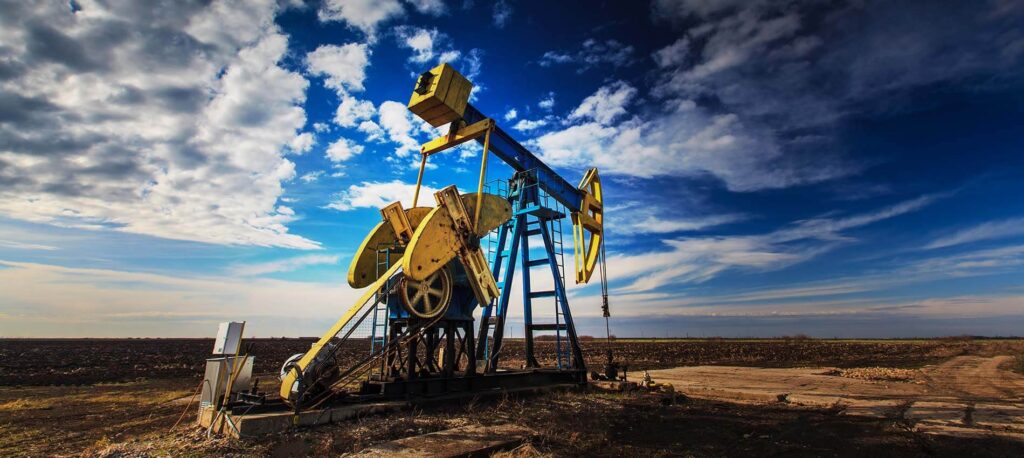You might think your will or trust already covers it, but if your estate plan doesn’t account for royalty payments, fluctuating market value, or missing property descriptions, you could be setting up your family for confusion, delays, or legal issues down the line. We’ve seen it happen.
That’s why we’re here to walk you through it. In this article, we’ll focus on how to plan ahead for your mineral rights, so you can avoid common pitfalls and make sure your legacy stays strong for the next generation.
Why Do Mineral Rights Require Special Attention in Estate Planning?
Mineral rights often require active management and a deeper understanding of legal, financial, and geological factors. While land may appreciate steadily, mineral interests can surge or collapse depending on commodity prices and extraction activity. That volatility makes them both a powerful asset class and a planning challenge.
If you hold producing oil and gas interests, you’re likely familiar with monthly or quarterly royalty payments. These streams of royalty income don’t stop when you pass away, they go to your heirs. Without clear instructions in your estate plan, those royalties can be suspended, creating financial uncertainty during an already difficult time for your family members.
Another layer of complexity is geography. A single mineral deed may involve tracts across multiple counties or even different states. Each location follows its own state laws for taxation, lease rules, and title recording. In some cases, the estate planning attorney must work with local professionals in Texas, Oklahoma, or other jurisdictions to resolve issues like dormant rights or inconsistent mineral rights ownership records.
Mineral rights also require constant oversight. Lease compliance, division orders, and production data need to be monitored. Many heirs don’t have the expertise or time for this level of mineral management, especially when the original mineral rights owner hasn’t left clear documentation. In those cases, creditors may target producing assets unless the estate is protected through limited liability entities like an LLC or irrevocable trust.
Failing to plan adequately can result in royalties being placed into suspense accounts, inaccessible to heirs until probate or title issues are resolved.
How to Value Mineral Interests for Estate Planning?
Mineral rights represent a fluctuating asset class that often requires specialized valuation techniques. Because mineral assets generate royalty income and respond directly to market conditions in the oil and gas industry, establishing an accurate fair market value is key for both tax purposes and long-term planning.
There are three commonly accepted valuation methods:
- Discounted cash-flow projections, which use five-year commodity price forecasts and production decline curves.
- Comparable sales analysis, where you assess recent sales of nearby tracts with similar geological profiles.
- Engineering reserve reports, which detail proved, probable, and possible (3P) volumes based on subsurface data and drilling history.
The location of your mineral ownership plays a major role in determining value. For example, tracts in high-demand shale plays like the Permian Basin can fetch two to four times more than comparable acreage in less active areas. Lease terms also influence value—an 18.75% royalty interest offers significantly different returns than one set at 25%.
Even if your mineral deed covers undeveloped land, there’s often speculative value that needs to be included in estate planning documents. Royalty income from active wells may follow a predictable decline curve, but undeveloped tracts still hold long-term potential that deserves a formal appraisal.
If your estate includes mineral rights exceeding $5 million in value or involves multiple operators, it’s wise to consult a certified petroleum engineer or mineral rights appraiser. Their expertise ensures that your asset’s market value is documented correctly, supporting accurate estate tax filings and enabling a proper stepped-up basis for your heirs.
A well-supported valuation not only fulfills IRS requirements, it also clarifies expectations for family members and beneficiaries. It allows your estate planning attorney to design strategies that align with your long-term estate planning goals while minimizing tax implications.
What are the Ownership Structures and Real Property Classifications?
As a mineral rights owner, you might hold your interests individually, share them jointly with family members, or place them into a trust or limited liability company (LLC). The form of ownership directly affects how easily you can transfer the rights, shield them from creditor claims, and allocate income to your heirs.
Each method carries different legal and tax implications. For example, owning through a trust document may avoid the need for court-ordered probate and preserve privacy, while holding property jointly can simplify immediate transfer but limit long-term planning flexibility.
Common ownership types include:
- Tenancy in common, where each owner holds a fractional interest, often passed through generations.
- Joint tenancy with rights of survivorship, which transfers the interest to the surviving co-owner without going through the probate process.
- Trust ownership, where mineral assets are held and managed for the benefit of beneficiaries, offering both management continuity and potential tax benefits.
- LLC ownership, which provides asset protection and centralized control, especially useful for families with complex mineral portfolios.
Common Title Issues with Mineral Rights
Mineral rights are often passed down through multiple generations, which can lead to complex title problems. If prior owners failed to record clear property descriptions or file updated estate planning documents, you may inherit a mineral deed with unclear ownership chains.
Title issues typically arise from fractional interests created when property is divided among many heirs without proper coordination. It’s not uncommon for a single tract to have dozens of mineral owners, each holding tiny, undivided shares.
Another issue is dormant mineral statutes. In many states like Texas and Oklahoma, surface owners can reclaim unused mineral rights if they’ve been inactive for 20–25 years. If you’re inheriting minerals, failing to file affidavits of use or other legal forms could result in the loss of ownership.
Resolving these issues requires due diligence. Steps might include conducting a full title run sheet, filing corrective deeds, or pursuing a quiet-title action. Always use precise language that includes metes-and-bounds descriptions to reduce ambiguity and secure your rights.
Types of Mineral Interests Defined and Protected in Estate Plans
The mineral fee simply represents complete ownership. It gives you full rights to lease, sell, develop, and manage the subsurface property without limitations. This type of interest is the foundation of most estate planning strategies involving mineral assets.
A mineral leasehold grants the lessee the right to explore and extract resources for a fixed period. Once the term ends, control reverts back to the original owner unless it’s renegotiated or extended.
Royalty interests allow you to collect a share of production revenue without bearing operating costs. These are often inherited and provide passive income streams that continue across generations.
An overriding royalty interest is derived from the lessee’s portion and remains in effect only during the term of the lease. While temporary, it can generate significant income while the well is productive.
Working interests are more involved. They give you decision-making authority over operations but also place full responsibility on you for development costs, maintenance, and liabilities tied to production. This structure requires active mineral management and a higher degree of oversight.
Non-participating royalty interests allow you to receive income while excluding you from leasing decisions. This setup is often used when multiple family members inherit different portions of mineral rights, allowing equitable distribution without shared decision-making.
Surface rights refer to ownership of the land above the minerals. While separate from the underlying resources, they can limit access to drilling operations and require surface-use agreements to manage potential conflicts.
How Can You Transfer or Inherit Mineral Rights Effectively?
Transferring or inheriting mineral rights requires careful planning and accurate documentation. These assets aren’t like a typical parcel of land or home, they’re dynamic, income-generating properties with legal and financial layers that impact your estate plan long after you’re gone. Whether you’re preparing to pass them on or you’ve recently come into inherited mineral rights, understanding the process can help you preserve value and minimize disputes.
Your first goal is clarity, who owns what, where, and under which terms. Without this information, transferring ownership can stall in probate or lead to royalty payments being held in suspense accounts. Planning early lets you avoid those delays and helps your heirs access income without interruption.
You also need to choose the most suitable method for the transfer, which depends on your estate planning goals, state laws, and how your mineral interests are held. For example, options like placing rights in a trust or limited liability company may provide asset protection and streamline management. On the other hand, certain deeds may be simpler but carry legal risks.
Verifying Inherited Mineral Rights
Many families assume they know what’s in the estate, only to find out later that title records are unclear or outdated. You can avoid this confusion by completing a few essential steps early.
Start by obtaining a full title run-sheet for the property in question. For producing oil and gas interests, you’ll also need a division order title opinion, commonly known as a DOTO. This legal document shows how ownership is divided and confirms who is entitled to royalty income.
It’s a good idea to compare current royalty statements to public production data from your state’s oil and gas commission. Discrepancies in volumes or pricing could reveal underpayments or unclaimed funds.
Maintaining organized records, including mineral deeds and historical property descriptions, helps establish your rights and simplifies future estate planning. If documentation is incomplete, an estate planning attorney can assist with curing title issues and verifying inherited ownership through proper legal channels.
Choosing the Right Method to Transfer Mineral Rights
A general warranty deed offers the strongest legal protections. It guarantees that you’re transferring clear title and shields beneficiaries from future claims, but it also exposes you, the grantor, to liability if problems arise later.
A quitclaim deed is quicker and easier to execute. However, it only transfers whatever rights you currently hold, without any guarantee of title. That makes it suitable for simple transactions between trusted parties, but less ideal when rights are complex or disputed.
Transfer-on-death deeds can help avoid probate altogether, but they must be carefully executed and recorded. In some states, these documents are not recognized or come with restrictions that limit their usefulness.
You might also consider transferring ownership through a trust or limited liability company. These structures provide long-term asset protection, centralized management, and estate tax benefits. They also allow you to structure decision-making authority and distribute royalties in line with your broader estate planning goals.
Using Trusts to Transfer and Manage Mineral Rights
Trusts are among the most effective tools for managing mineral rights in your estate plan. They not only help you avoid the probate process but also offer long-term oversight and potential tax benefits for your beneficiaries. You can choose between a revocable or irrevocable trust depending on your goals, risk profile, and family dynamics.
With a revocable trust, you retain full control during your lifetime. You can modify the trust document, add or remove assets, and manage distributions as needed. However, the assets remain part of your taxable estate and are not protected from creditors. This option is ideal if you want flexibility while centralizing mineral rights ownership.
An irrevocable trust, on the other hand, removes mineral assets from your estate entirely. This structure offers stronger protection against creditor claims and can help reduce estate tax exposure. It’s particularly useful if your mineral interests generate substantial royalty income or if your estate exceeds federal thresholds.
Placing mineral assets in a trust also allows you to appoint a trustee or mineral management company to handle lease negotiations, track royalty payments, and oversee records.
Transfer-on-Death (TOD) Deeds: Pros and Cons
A transfer-on-death deed can be a simple and effective way to transfer mineral rights without going through probate. This type of deed allows you to name a beneficiary who will receive ownership of the mineral interests automatically upon your death, bypassing court delays and fees.
The TOD deed must be recorded properly while you’re still living. After your passing, the named beneficiary is typically required to file an affidavit of death and acceptance, often within a specific timeframe, such as nine months. If that step isn’t completed, the property may revert to the probate estate, causing delays and complications.
Some state laws place limitations on TOD deeds, especially when it comes to contingent beneficiaries. If the designated person passes away before you, and there’s no secondary designation allowed, the deed becomes void. That creates risk if your estate plan lacks backups or clear alternatives.
Consider Partial Sales or Gifting for Liquidity or Planning
If you’re looking to reduce your estate size or unlock liquidity while retaining long-term upside, you may want to consider a partial sale or structured gifting of your mineral rights. These strategies can help you meet current financial goals without losing full control of your mineral assets.
Selling 25% to 50% of a high-value tract can generate immediate cash for reinvestment or diversification. This is particularly useful when market conditions are favorable or when you’re preparing to balance interests among multiple heirs. A partial sale can also reduce the size of your estate, potentially lowering exposure to estate taxes.
Another useful strategy is annual exclusion gifting. Under current tax laws, you can gift up to $18,000 per person each year without triggering gift taxes. This allows you to gradually transfer ownership of mineral interests to your children or other beneficiaries over time, while still maintaining management control.
What Legal and Administrative Issues Should You Prepare For?
The probate process is one of the most common bottlenecks. Without proper planning, royalty income may be suspended while courts verify ownership, settle creditor claims, and assign a personal representative. Delays like these can last months, or even years, especially when mineral interests are split across counties or states.
Even the wording in your estate planning documents can trigger complications. Vague or outdated property descriptions may not meet state recording standards. That’s why detailed, location-specific language is necessary when transferring mineral assets.
From a legal standpoint, your documents should align with how you structure ownership, whether individually, jointly, or through a limited liability company or trust.
Probate and Mineral Rights
Probate is a court-supervised process required to validate a will, settle debts, and distribute assets, including mineral rights. When not properly planned for, this process often creates delays in receiving royalty income. Payors typically suspend payments until title is confirmed, a personal representative is appointed, and final approval is granted. This timeline can range from six to eighteen months, depending on the estate’s complexity.
During probate, all mineral assets must be documented and assigned based on legal ownership. If your estate lacks clear title or up-to-date records, the court may require additional evidence or even initiate a title search. This not only extends the timeline but may reduce the marketability of the interests if royalty payments have been interrupted.
Drafting Effective Estate Planning Documents
Creating effective estate planning documents is critical when dealing with mineral rights. Unlike typical property, mineral interests often cross state lines, change in value rapidly, and require detailed tracking. Your documents need to be precise, especially when describing the assets being transferred or managed.
Start with your will, trust, or deed. Use exact language, such as: “all of grantor’s right, title, and interest in and to the oil, gas, and other minerals lying under [insert legal description of land].” This avoids ambiguity and gives your personal representative, beneficiaries, or trustee a clear directive.
Avoid generic phrases like “all property owned at death,” which can overlook mineral assets, especially when ownership is fractional or held through an entity like an LLC. You should also include updated legal property descriptions, attach supporting documentation where available, and ensure the documents are executed according to state laws.
State-Specific Considerations (e.g., Texas Law)
Mineral rights are governed by state law, which means rules can differ significantly across jurisdictions. Texas offers a clear example of how specific requirements can shape your estate planning process. In Texas, any deed transferring mineral interests must be notarized and filed in the county where the property is located. If you fail to record the deed, the transfer may not be legally enforceable, especially against subsequent purchasers who record first.
Texas law also requires that your estate planning documents clearly identify the mineral tract using accurate property descriptions. This ensures that your mineral deed aligns with what the county clerk and title examiner need to verify ownership.
You should always consult an estate planning attorney familiar with the laws in your state. What applies in Texas may not hold in Oklahoma or elsewhere.
Importance of Clear Property Descriptions
Precise property descriptions are essential when transferring mineral interests. Unlike surface land transactions, mineral rights often involve fractional ownership, overlapping claims, and long-held records that span generations. A vague or incomplete legal description in your estate planning documents can delay probate, trigger disputes, or invalidate the transfer altogether.
For example, referencing “my mineral rights in Texas” is insufficient. Instead, your documents should specify exact tract boundaries using metes and bounds, survey data, or parcel numbers recognized by the local recording office. This level of detail ensures that your heirs, the county clerk, and any royalty payors can confirm your intent and apply the transfer correctly.
If your estate includes mineral assets spread across multiple counties or states, maintaining a clear and organized record of these legal descriptions can protect your beneficiaries from confusion or litigation..
Standard vs. Complex Estate Planning Approaches for Mineral Rights
The level of planning needed for your mineral assets depends on factors like location, value, and ownership structure. For some, a standard estate plan with a basic will or revocable trust may be sufficient. This approach works best when mineral rights are located in one state, held in fee simple, and tied to a single property.
However, many mineral rights owners require more complex planning. If you hold interests in multiple states, have split estates separating surface and subsurface rights, or manage fractional shares with other heirs, your estate planning strategy must go further. In these cases, tools like irrevocable trusts, limited liability companies, and detailed operating agreements provide structure, asset protection, and tax advantages.
A complex estate plan might also involve managing royalty payments, lease compliance, and transfer restrictions across different jurisdictions.
How Do Taxes Affect the Transfer and Ownership of Mineral Rights?
If you own producing mineral interests, royalty income is typically treated as ordinary income and may be subject to self-employment tax if held individually. However, you may qualify for a depletion deduction, which can offset up to 15 percent of your gross revenue. This can ease your annual tax burden while maintaining compliance with IRS rules.
Upon death, a stepped-up basis allows your heirs to reset the market value of the mineral assets, effectively eliminating unrealized capital gains. If they sell the interests later, they may avoid thousands of dollars in taxes. This rule alone makes proper valuation at the time of death a critical step in your estate planning process.
For high-value estates, placing mineral assets in an irrevocable trust can reduce exposure to estate taxes. If the estate is composed largely of producing wells or working interests, you may also qualify for a § 6166 deferral, giving your estate extra time to pay tax obligations without forcing a sale.
Gifting mineral interests during your lifetime can also create tax advantages. Annual exclusion gifts reduce estate size without triggering gift tax, and a 1031 exchange may allow you to defer capital gains if you reinvest in like-kind real estate..
How Do You Plan for Succession and Long-Term Mineral Rights Management?
Planning for succession ensures your mineral rights continue to generate value beyond your lifetime. Without clear direction, ownership can become fragmented, mismanaged, or lost in legal disputes. That’s why building a management plan into your estate is just as important as choosing the right transfer method.
You should start by defining who will take control of the assets. Whether it’s a family member, an appointed trustee, or a professional mineral manager, this person must understand lease negotiations, production data, and royalty accounting. Even passive interests require oversight to ensure income continues to flow correctly and paperwork stays current.
Succession planning should also account for income distribution, tax planning, and decision-making authority. Using a trust or limited liability company allows you to structure how decisions are made, who receives distributions, and under what conditions. This helps avoid disputes and gives your heirs a blueprint for how to manage what can otherwise be a complex asset.
Creating a Succession Plan for Ongoing Management
A well-designed succession plan helps preserve your mineral rights as a valuable family asset. To start, identify who will manage the property once you’re gone. This may be a family member with industry experience or a third-party mineral management company that handles lease reviews, division orders, and royalty audits.
You should also think about how revenue will be distributed. If multiple beneficiaries are involved, clear instructions within your trust document or operating agreement can prevent confusion. This is especially important when mineral interests are held through a limited liability company or other shared entity.
Appointing a trustee or manager with expertise in the oil and gas sector adds an extra layer of security. This person or team can ensure due diligence is conducted regularly and that records stay current with changing lease terms and market conditions.
Communicating Plans with Heirs and Stakeholders
If you want your mineral assets to be preserved and managed smoothly across generations, consistent and open communication is essential. It’s not enough to create an estate plan—you also need to make sure your heirs and other stakeholders understand it. By clearly sharing your goals, you reduce the risk of confusion, disputes, and emotional conflict among family members.
One effective way to do this is by holding a family meeting every three to five years with your estate planning attorney present. During these sessions, review updates to your estate planning documents and reaffirm your wishes for managing mineral interests. You can also distribute a written mineral management handbook that outlines lease terms, operator contacts, tax obligations, and royalty income procedures. This helps your beneficiaries understand their responsibilities, reinforces your intentions, and offers long-term clarity.
Professional Management Services: When to Outsource
Not every mineral rights owner has the time, interest, or expertise to manage their property effectively, especially when the portfolio includes inherited mineral rights or assets across multiple states. In these situations, outsourcing to a professional mineral management firm can make a major difference.
If your heirs are geographically dispersed, uninterested in oil and gas, or unfamiliar with mineral rights ownership, hiring a third-party manager ensures your royalty payments, leases, and tax obligations are handled with precision. These professionals typically charge 3 to 5 percent of gross revenue. In return, they conduct due diligence, monitor market conditions, and coordinate with operators on your behalf.
This approach minimizes family friction and ensures your mineral interests continue to deliver value over time. It also helps reduce the administrative burden on trustees, beneficiaries, or LLC managers, while providing access to real-time data and expert-level guidance.
What Should You Know About Leasing and Mineral Rights Transactions?
When it comes to managing your mineral rights, leasing is often the most direct way to convert mineral interests into income. However, not every lease is created equal, and how you approach these agreements can significantly shape the future of your estate. If you’re a mineral rights owner or have inherited mineral rights, knowing lease structures and transaction methods is essential for protecting both value and control.
Leases grant exploration and production rights to oil and gas companies. But these agreements also impact the estate planning process, especially in how royalties are distributed, how property is valued, and how rights are transferred to heirs. The lease terms you negotiate today could affect your loved ones for decades.
An estate plan that includes leased mineral assets should address potential tax implications, market fluctuations, and surface rights usage. To preserve your family legacy and maximize revenue, you may want to include provisions for managing royalty interest income, review all legal documentation with your estate planning attorney, and update your estate planning documents to reflect new leases or sales.
Leasing Mineral Rights in Your Estate
If you hold oil and gas interests, leasing those minerals is a practical way to create value while retaining ownership. But timing, strategy, and language all matter. Before you sign any agreement, you should consult with a law firm or mineral management expert who understands how leases affect your estate and its distribution process.
Your lease should reflect your estate planning goals. For instance, including a cost-free royalty clause ensures that your royalty income isn’t diluted by post-production expenses. A depth severance clause can also preserve the rights to deeper formations, allowing you or your heirs to lease them separately in the future.
Negotiating favorable lease terms early on helps simplify the probate process later. You may also want to align the lease duration with key estate milestones, like a transfer of ownership or major tax events.
Negotiating Oil and Gas Leases: Key Questions
Before you enter a lease agreement, it’s vital to ask the right questions. Each detail in the contract can influence how your mineral assets generate income and how that income is handled in your estate.
You should always clarify these key points:
- What’s the bonus per acre? This upfront payment can vary widely depending on market conditions and location.
- What royalty rate is being offered—20% or 25%? This has a direct impact on the royalty payments you and your beneficiaries will receive.
- Are there shut-in provisions? These should specify payment terms when a well is not producing.
- Does the lease include a Pugh clause? This releases non-producing acreage so it can be re-leased or developed independently.
Navigating Mineral Rights Transactions
Selling, buying, or exchanging mineral interests is a complex process, but with the right preparation, you can avoid costly mistakes. Whether you’re a mineral rights owner looking to sell or someone hoping to expand your mineral assets, due diligence is your first and most critical step. This includes verifying ownership, reviewing royalty interest histories, and assessing lease agreements that may affect value or control.
For sellers, it’s essential to review at least three years of royalty check detail. These records help uncover underpaid volumes or inconsistencies that may lower the sale price. If you’re a buyer, always request operator production data and compare it with historical payments. This not only confirms asset value but protects your estate plan from future disputes.
The oil and gas industry is full of variables, and market conditions change quickly. You’ll want to work closely with professionals, like an estate planning attorney or mineral management expert, who can help you understand transfer of ownership requirements, property descriptions, and applicable state laws, especially in places like Texas or Oklahoma.
How Can You Reduce Risk and Avoid Estate Disputes?
Disputes over mineral rights can unravel even the most carefully built estate. If your mineral interests are part of your estate plan, you need to prepare for potential disagreements, especially among heirs with differing expectations or levels of involvement. These conflicts often surface when property descriptions are vague, mineral assets are misvalued, or estate planning documents fail to reflect current ownership or lease terms.
To reduce risk, work closely with an estate planning attorney to keep documentation accurate and up to date. Make sure your estate planning strategies include clearly defined roles, such as appointing a personal representative or trustee with mineral management experience. Clarify how royalty interest income, surface rights, and mineral deeds will be distributed across generations. Your goal is to preserve value while preventing confusion or tension during the probate process.
Organizing your mineral ownership through an LLC or trust structure may also offer limited liability and tax benefits.
Preventing Family Disputes over Mineral Estates
Family dynamics can shift quickly when mineral rights enter the conversation. Common triggers for conflict include unequal distributions of mineral interests, confusion about inherited mineral rights, or disagreements about how much control each family member should have.
You can avoid these problems by planning proactively. Clearly state in your will or trust whether you intend an equal or equitable distribution. That means clarifying if each heir will receive the same percentage or a cash equivalent adjusted for market value differences between tracts. Without this clarity, disputes over fairness often emerge.
You should also involve an estate planning attorney to prepare detailed estate planning documents that outline expectations, lease responsibilities, and royalty income management.
Estate Litigation: Common Pitfalls and How to Avoid Them
Estate litigation often stems from poor documentation, outdated mineral deeds, or unclear beneficiary designations. If the title to your mineral ownership is in question or lease files are missing, you risk delaying the probate process and creating legal exposure for your estate.
You can minimize these risks by maintaining a secure, centralized file that includes original property descriptions, court orders, probate documents, and active lease agreements. This ensures your executor or personal representative has immediate access to what’s needed, whether to manage royalties, respond to operator inquiries, or transfer ownership.
It’s also critical to periodically review documents with your estate planning attorney. Laws in states like Texas and Oklahoma can evolve, and what was once sufficient may no longer meet current legal standards.
What is the Best Estate Planning Vehicle for Your Mineral Rights?
Whether you’re the mineral rights owner of a single property or managing multiple oil and gas assets across states like Texas or Oklahoma, the right structure can help you preserve value and streamline the estate planning process for your loved ones.
If your estate plan includes inherited mineral rights or ongoing royalty income, you need more than just a will. Structuring ownership through a trust or a limited liability company (LLC) allows for better control and protection. These entities also provide long-term flexibility for your heirs while minimizing exposure to creditor claims or probate delays. Estate planning attorneys often recommend these vehicles to help you meet your estate planning goals and maintain mineral rights ownership across generations.
Your mineral assets aren’t like other investments. They require tailored strategies that anticipate fluctuations in production, market value, and family dynamics.
Comparing Ownership Entities: LLCs, Trusts, and Personal Title
When it comes to mineral ownership, the structure you choose plays a major role in protecting your estate and simplifying management. Each option, personal title, trust, and LLC, has unique implications for liability, tax treatment, and control.
Owning mineral rights in your personal name may seem straightforward, but it exposes your assets to personal creditors and requires the probate process at death. This can delay distribution and add legal costs for your heirs. A trust, in contrast, allows for a smoother transfer of ownership. It avoids probate entirely and can include detailed instructions to stagger royalty payments or divide mineral interests fairly among beneficiaries.
An LLC offers even more protection and flexibility. It shields your mineral assets from personal liability and enables collective management through an operating agreement. This is especially valuable when multiple family members or mineral owners are involved. LLCs also provide charging-order protection and can be adapted to match long-term estate planning strategies with minimal disruption.
What are the Best Tips for a Smooth Estate Transition?
Securing a smooth estate transition for your mineral rights demands more than just a signed will. You’re dealing with an active asset class tied to fluctuating royalties, legal responsibilities, and generational interests. Without a consistent process, even well-structured estate planning documents can fail to protect your goals or your loved ones.
To reduce friction, schedule a formal estate plan review at least every five years—or sooner if a family member passes away, your mineral deed changes, or your oil and gas royalties increase. Make sure your mineral assets are clearly reflected in both your trust document and beneficiary designation forms. Keep everything updated and organized.
Maintain a digital inventory that includes tract maps, lease files, royalty interest records, property descriptions, and contact information for your accountant, estate planning attorney, and mineral management professionals. These materials give your heirs and personal representatives the tools they need to act efficiently, even during a challenging probate process.
How Can You Secure Your Mineral Legacy for the Future?
When you think about legacy, it’s not just about transferring assets, it’s about transferring knowledge. Your mineral rights are part of a dynamic industry that depends on market conditions, production cycles, and complex title history. Without proactive estate planning strategies, your heirs could lose both value and direction.
To secure your mineral ownership across generations, begin with education. Help your beneficiaries understand how royalty income is generated, how mineral rights ownership works, and what their responsibilities will be. Encourage open conversations within your family about wishes, expectations, and management strategies. Then formalize those insights through proper estate planning documents and long-term trust structures.
Work closely with a law firm that specializes in the oil and gas industry, especially if your estate includes inherited mineral rights in regions like Texas or Oklahoma.
Conclusion
When it comes to mineral rights, you’re not just holding land, you’re managing a living asset that keeps earning, changing, and demanding your attention. If you treat it like just another piece of property, you risk more than lost income. You risk confusion, delays, and conflict that could easily be avoided.
That’s why a clear, thoughtful estate plan matters. Whether it’s setting up a trust to skip the probate process, forming an LLC for liability protection, or simply keeping your documents and deeds organized, you’re laying the groundwork for smoother decisions down the road. And let’s not forget the most important part: helping your family understand what they’re inheriting and how to manage it well.
We all want to leave behind more than assets, we want to leave behind confidence, clarity, and peace of mind. With the right plan, your mineral rights can become a steady, well-managed gift that supports your loved ones long after you’re gone.









